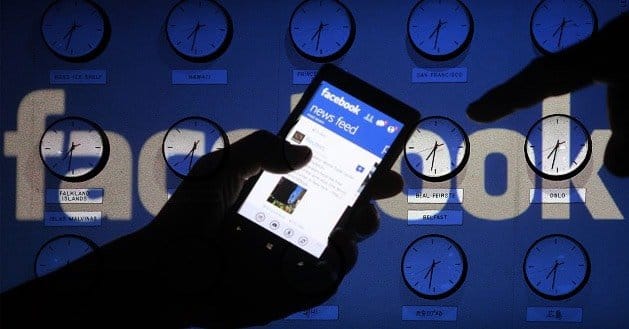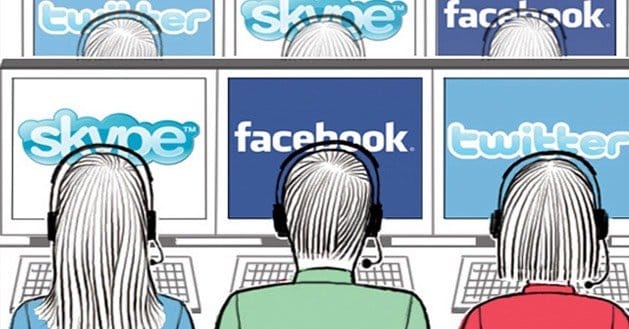 Written by ContentPowered.com
Written by ContentPowered.com
People all around the world are posting items on Facebook. Thus, the peak time in New York, will not be the peak time in California or London, England. Simply stated, when someone comes forth with a peak time, make sure that the appropriate time zone is identified.
With that little bit of knowledge, it is possible to determine your peak times. Therefore, if the peak time for New York is identified as being 3 p.m., it will be necessary to adjust your release so that it will be presented three hours later when it is 3 p.m. in California.
Timing is a significant factor. No one wants to miss the “golden hour” when your post is most often viewed. However, it is necessary to remember that this opportunity will vary across the country and around the world.
Facebook advertising is different from traditional advertising in many ways. However, the biggest difference is the placement. In television and radio, advertisers are told when their ad will run with a 15-minute margin of error and sometimes less, if the advertiser buys the opening or closing ad. Newspapers and magazines are static. Once an ad is placed on a page, it will stay on that page as long as the publication is in the home or office.
With Facebook, the situation is almost reversed. Comments by Facebook’s members, postings and other advertising can push an ad to a new position different than the spot it had an hour earlier. Thus, the ad has to be designed to attract attention, provide a keyword, an easy to remember link, and do something to make it stand out from the rest of the crowd.
Studies Give Insight To Peak Time Determination
Many studies have been conducted in an effort to determine when Facebook has its peak traffic. However, it may not be the peak time when your core audience is looking at the Facebook screen.
A study conducted by Virtue, a social media management company, accumulated a considerable amount of data that can be found on numerous websites. To get an accurate understanding of the audience demographics, understanding the “peak time” threshold from more than one perspective is essential.
The Virtue Study determined the three busiest viewing periods for Facebook’s usage were Monday through Friday at 11 a.m., 3 p.m. and 8 p.m., Eastern Standard Time.
Now, apply a little logic to this. Students in school often eat lunch around 11 a.m. and are probably checking their Facebook activity at that time. The 3 p.m. time slot represents the almost universal time when school ends for the day and when people who are working may be taking a coffee break. Finally, the 8 p.m. time is usually after dinner, when family members check the computer, watch television, or read a book.
However, if those times are not adjusted, 3 p.m. in California is really 6 p.m. in New York. This is when many people are just getting home, after working late, fighting traffic, and completing other time consuming activities.
How Do You Determine The Peak Time, If Time Keeps Changing?
The Virtue Study determines that morning posts tend to perform better than those published in the afternoon. Virtue also reported that approximately 65 percent social media campaigns were aimed at the 9 a.m. to 5 p.m. period, when people are at work and school, showing that a large segment of the consumers who are being sought might be overlooked.
Looking From A Different Perspective
Now the issue of SEO or Search Engine Optimization comes into play. To some extent, with the right SEO, timing makes less difference than many would assume. However, it would likely be accurate to assume that 3 a.m. is not the best time to attract customers.
According to LinchpinSEO, a recent Infographic report may help to identify the best days to post on Facebook. The report goes the extra step in organizing the information by industry. A story on the Entrepreneur website provides details about how the Linchpin findings can be utilized.
Bringing It All Together
The Internet and Facebook, in particular, have established a new model for advertising. Prior to the information age, advertisers used newspapers and magazine, radio and television and direct mail to deliver their advertising flyers and other materials.
Today, the vehicle of choice for many, who are determining how they can best spend their money, is the Internet and Facebook. With Facebook, the customer can ask a question, have a discussion with you and voice complaints for everyone to see. Thus, it is important to be prepared for this level of interaction that was unheard of not that many years in the past.
To help with this task, there are at least 50 tools available on the Internet that will let people determine the best time to reach a particular audience segment. To put it simply, there is no easy answer.
Facebook and other social media sites are different from other advertising mediums. There is no clear division between “news content” and “advertising content” that is delivering a message about a product or service.
Therefore, there are certain things that have to be done. These include:
- Determining your core base of customers is necessary. This is true in print, radio, or television advertising. It is also vital in social media advertising.
- Determining the demographics of your core base of customers is absolutely necessary. If you are selling the latest and greatest jeans and shoes, your demographics are younger people. If your product is something, the older set would possibly use or buy, then you have to decide how much time and how much belief they have in Internet-based advertising.
- Decide how flexible you can be and the necessity that everything must be an announcement. People like to see new content, so maybe it is possible to change your content every few hours. This will attract people who are viewing at a later time than the content was first posted but will also give some people a second or third chance to see your ad.
- You must also establish a budget. Facebook and all Internet advertising are not free. It can become costly if not properly monitored. A decision has to be made if your ads are going to be static, or will it be a clickable ad that will take them away from the Facebook page to your company’s home page or the product page.
Without question, the advertising market has been made more complicated by the arrival of the Social Media networks. However, it is important to remember that some of the old rules about spending patterns being directed by parents, individual income, and need are still relevant.
Finally, consider if a short-term or long-term campaign is needed. A long-term campaign provides the opportunity to adjust the message and the timing. A short-term campaign means there is a small window of opportunity that should not be squandered.
The website, Social Media Today lists the 50 tools that can help in understanding social media monitoring, analytics, and management.
Everyone will not use every tool. However, they are a valuable resource that should not be ignored when deciding how a company can best utilize the purchasing power that lies with Facebook users. Thus, it is necessary to familiarize you with the tools that are available and use as many as needed to make your initial decisions. The experience you gain after using these tools a few times will become very important. This experience will become a major tool for making informed decisions about your advertising strategy.


